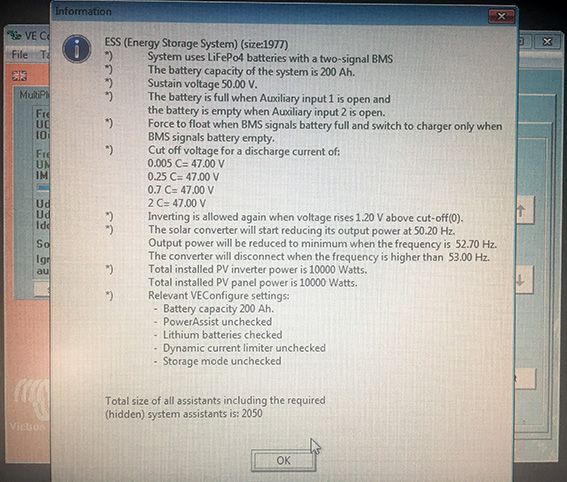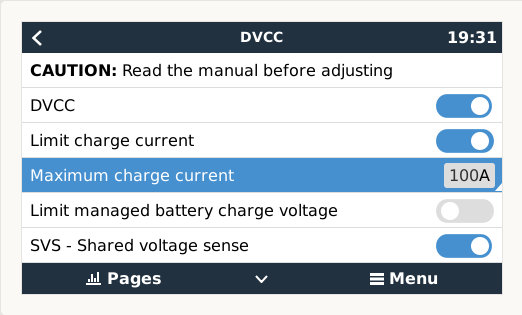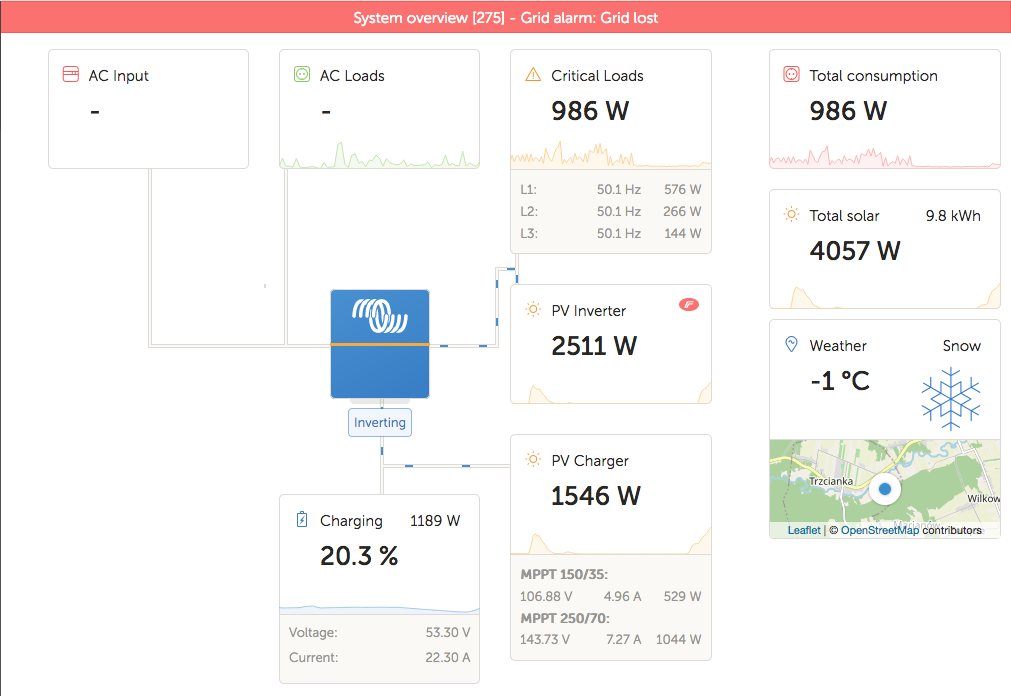I have 2 x 2kW Steca AC inverters with 3.68kW of solar panels.
I plan to add an EasySolar II 48/5000, with another 3 to 4 kW of panels connected to its MPPT and 2 x 4 kWh of BYD LiFePO4 batteries.
I would like all the solar PV to keep generating during a power cut, so to do this I need to connect the Steca inverters to AC Out on the EasySolar.
Will the EasySolar shut them off if necessary by increasing the frequency? The inverters are UK G83 compliant and will trip if the frequency is >51.0 Hz for 0.5 secs.
In this situation the batteries will accept 130 A continuously and 180 A for up to 10 secs so should then cope with the full 70A output of the EasySolar charger.
Is this configuration OK and what do I have to do to set it up correctly?
TIA







